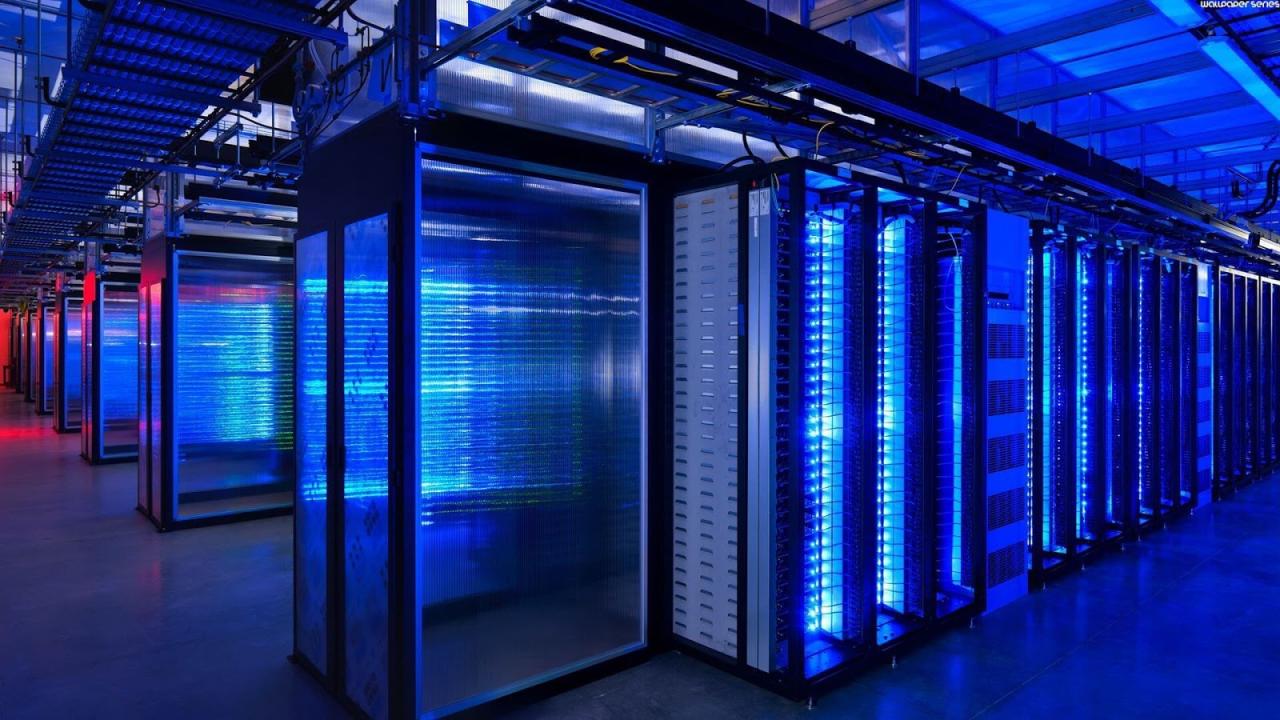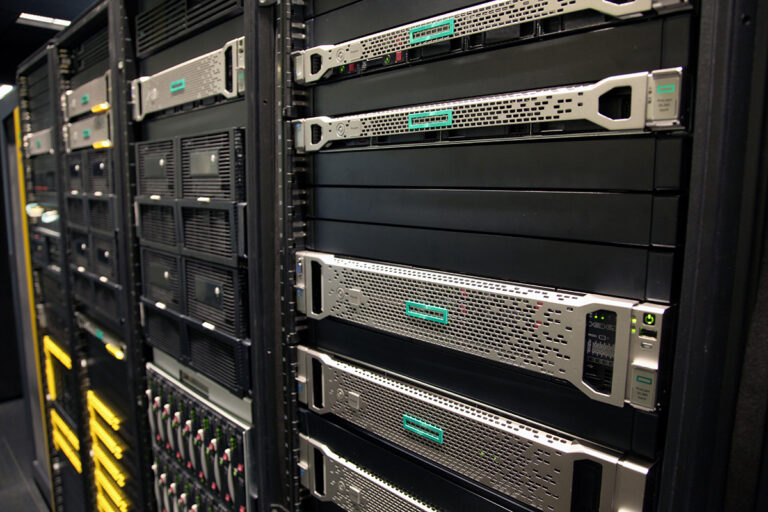In the intricate fabric of modern business, enterprise servers form the undefeatable backbone. These powerful machines are the custodians of critical data, the engines of complex applications, and the silent enablers of virtually every business operation. From processing global financial transactions and managing vast customer databases to powering supply chain logistics and facilitating real-time analytics, their continuous availability is not just a preference—it’s an absolute necessity. However, in an increasingly volatile digital landscape, the resilience of these vital servers is constantly tested, challenging organizations to build robust, fault-tolerant infrastructures that can withstand the unexpected and emerge stronger.
The stakes are incredibly high. Server downtime, data loss, or performance degradation can translate directly into lost revenue, damaged reputation, regulatory fines, and a significant erosion of customer trust. In an always-on world, businesses simply cannot afford to have their critical systems falter. This deep dive will explore the multifaceted nature of resilience in enterprise servers, the pervasive threats that test them, and the advanced strategies organizations are deploying to ensure their digital heartbeats remain steady, even under immense pressure.
Why Resilience Is Paramount

Enterprise servers face a barrage of internal and external pressures. The sheer volume of transactions, the continuous flow of data, the complexity of interdependencies, and the constant threat of cyberattacks all combine to create an environment where failure is not an option.
The traditional approach of simply recovering from an outage is no longer sufficient. Modern businesses demand proactive resilience—the ability for systems to anticipate, resist, adapt, and recover from disruptions with minimal, if any, impact on operations. This imperative is driven by:
A. Increased Digital Dependency: Almost every business function, from customer engagement to internal logistics, is now digital, making server availability directly synonymous with business continuity.
B. “Always-On” Customer Expectations: Customers expect 24/7 access to services, and even brief outages can lead to customer churn and brand damage.
C. Regulatory Compliance and Data Integrity: Industries like finance and healthcare face stringent regulations regarding data availability, integrity, and privacy, with severe penalties for non-compliance.
D. Competitive Pressures: Businesses that demonstrate superior uptime and reliability gain a significant competitive edge.
E. Cost of Downtime: The financial cost of server downtime can be astronomical, ranging from thousands to millions of dollars per hour, depending on the industry and the nature of the business.
The Threats That Test Resilience
Enterprise servers are exposed to a wide array of threats, both predictable and unforeseen. A robust resilience strategy must anticipate and mitigate all of them.
A. Hardware Failures:
- Component Breakdown: Individual components (CPUs, RAM, hard drives, power supplies, network cards) can fail due to age, manufacturing defects, or stress. Hard drive failures are particularly common.
- Environmental Factors: Overheating due to cooling system failures, power fluctuations (surges, sags, outages), and even natural disasters (floods, fires, earthquakes) can directly impact server hardware.
- Wear and Tear: Continuous 24/7 operation over years leads to physical degradation of components.
B. Software and Application Issues:
- Operating System (OS) Crashes: Bugs, resource exhaustion, or driver conflicts can lead to OS instability and crashes.
- Application Bugs and Malfunctions: Errors in application code, memory leaks, or improper resource utilization can cause applications to freeze, crash, or perform poorly, impacting the underlying server.
- Configuration Errors: Misconfigurations in the OS, applications, or network settings are a leading cause of outages, often human-induced.
- Resource Exhaustion: Applications or services consuming excessive CPU, memory, or disk I/O can starve other critical processes, leading to system unresponsiveness or crashes.
C. Cybersecurity Attacks:
- Ransomware: Encrypting server data and demanding a ransom. This not only impacts availability but can also lead to permanent data loss if backups are inadequate.
- Distributed Denial of Service (DDoS) Attacks: Overwhelming servers with traffic to make them unavailable to legitimate users.
- Data Breaches and Unauthorized Access: Attackers exploiting vulnerabilities to gain access to servers, steal sensitive data, or install malware.
- Malware and Viruses: Malicious software designed to disrupt operations, steal data, or compromise server integrity.
- Insider Threats: Malicious or negligent actions by current or former employees with legitimate access, leading to data loss, sabotage, or system compromise.
D. Network Disruptions:
- Network Hardware Failure: Routers, switches, or firewalls failing, isolating servers from the network.
- Connectivity Issues: Problems with internet service providers (ISPs), backbone network outages, or misconfigured network devices preventing servers from communicating.
- Bandwidth Saturation: Legitimate or malicious traffic overwhelming network capacity, leading to slow performance or outages.
E. Human Error:
- Accidental Deletion or Misconfiguration: Human mistakes are a pervasive threat, ranging from accidental file deletion to incorrect command execution on production servers.
- Improper Maintenance: Errors during planned maintenance, such as incorrect patch application or faulty hardware replacement.
- Lack of Training: Personnel not fully understanding system complexities or security protocols.
Building Resilience:
Achieving true enterprise server resilience requires a comprehensive, multi-layered approach that integrates technologies, processes, and people.
A. Hardware and Infrastructure Resilience:
- Redundant Components (N+1, 2N):
- Power Supplies: Servers are equipped with multiple power supply units (PSUs), where if one fails, the others seamlessly take over. Common configurations include N+1 (one extra than needed) or 2N (fully redundant, often independent power paths).
- Fans: Multiple fans ensure cooling even if one fails.
- Network Interface Cards (NICs): Multiple NICs allow for network teaming or bonding, providing redundancy and increased bandwidth.
- RAID (Redundant Array of Independent Disks): Protects against data loss from individual disk failures by striping and mirroring data across multiple drives.
- Dual Power Paths: Providing redundant power feeds from different sources (e.g., separate utility grids, different UPS systems) to minimize risk from power outages.
- Uninterruptible Power Supplies (UPS): Providing temporary battery power to servers during short power outages or fluctuations, allowing time for generators to start or for graceful shutdown.
- Generators: Large-scale diesel or natural gas generators provide long-term power in the event of extended grid outages.
- Environmental Monitoring and Control:
- Temperature and Humidity Sensors: Constant monitoring to ensure optimal operating conditions.
- Automated Cooling Systems: Redundant cooling systems (CRAC/CRAH units, chillers) that can take over if a primary system fails.
- Fire Suppression Systems: Non-water-based suppression systems (e.g., inert gas) to protect equipment from fire damage without causing water damage.
- Physical Security: Robust physical access controls to data centers and server rooms to prevent unauthorized tampering or theft.
B. Software and Virtualization Resilience:
- Server Virtualization:
- High Availability (HA): Hypervisor features (e.g., VMware HA, Hyper-V Failover Clustering) automatically restart virtual machines (VMs) on healthy physical hosts in the event of a host failure.
- Live Migration (vMotion, Live Migration): Allows running VMs to be moved from one physical host to another without any downtime, facilitating maintenance, upgrades, and load balancing without service interruption.
- Fault Tolerance (FT): For mission-critical VMs, Fault Tolerance (in VMware vSphere) creates a live, shadow instance of a VM on a separate host, ensuring continuous operation even if the primary host fails.
- Clustering Technologies:
- Application Clustering: Multiple servers running the same application are grouped into a cluster. If one server fails, the application workload automatically shifts to another active server in the cluster (e.g., Windows Server Failover Clustering, Oracle RAC).
- Database Replication and AlwaysOn Availability Groups: Techniques to replicate database changes across multiple servers in real-time, ensuring data availability and quick failover in case of a primary database server failure.
- Operating System and Application Hardening:
- Regular Patching: Implement robust patch management processes for OS and applications to close known security vulnerabilities.
- Principle of Least Privilege: Configure servers and applications with only the minimum necessary permissions to reduce the attack surface.
- Secure Configuration Baselines: Follow industry best practices (e.g., CIS benchmarks) for securely configuring OS and application services.
C. Data Resilience and Recovery:
- Regular Backups:
- Comprehensive Backup Strategy: Implement a multi-tiered backup strategy (e.g., daily, weekly, monthly) for all critical data and server configurations.
- Offsite and Immutable Backups: Store copies of backups offsite for disaster recovery and ensure they are immutable (cannot be altered or deleted) to protect against ransomware.
- Regular Testing: Crucially, regularly test backup restoration procedures to ensure they are viable and reliable.
- Disaster Recovery (DR) and Business Continuity (BC) Planning:
- DR Sites: Establish secondary, geographically separate disaster recovery sites that can take over operations if the primary data center is compromised or destroyed.
- DR Drills: Conduct regular, realistic DR drills to test the entire recovery process, identify gaps, and train personnel.
- Recovery Time Objective (RTO) and Recovery Point Objective (RPO): Define clear RTOs (maximum tolerable downtime) and RPOs (maximum tolerable data loss) for all critical applications and design DR strategies to meet these objectives.
- Data Replication:
- Synchronous vs. Asynchronous: Implement synchronous data replication for zero data loss (RPO=0) for highly critical applications over short distances, and asynchronous replication for longer distances or less critical data.
- Geo-Redundancy: Replicate data across multiple geographically dispersed data centers or cloud regions to protect against regional disasters.
D. Network Resilience:
- Redundant Network Paths: Deploy multiple, independent network connections (from different ISPs if possible) to prevent single points of failure.
- Redundant Networking Hardware: Utilize redundant routers, switches, and firewalls with automatic failover capabilities.
- Network Segmentation: Divide networks into isolated segments to limit the spread of attacks and contain issues to specific areas.
- DDoS Mitigation Services: Employ external DDoS mitigation services that can absorb and filter malicious traffic before it reaches the data center.
E. Operational Resilience and Automation:
- Monitoring and Alerting:
- Comprehensive Monitoring: Implement robust monitoring solutions for server health, performance metrics (CPU, memory, disk I/O, network), application status, and security events.
- Proactive Alerting: Configure alerts for deviations from baseline performance or security thresholds, enabling rapid detection of issues.
- Predictive Analytics (AIOps): Leverage AI and machine learning to analyze historical data and predict potential failures or performance bottlenecks before they occur, allowing for proactive intervention.
- Automation:
- Automated Remediation: Implement automated scripts or playbooks to respond to common issues (e.g., restarting services, failing over to a standby server).
- Infrastructure as Code (IaC): Define server configurations and infrastructure as code to ensure consistency, prevent configuration drift, and enable rapid, error-free deployments and recovery.
- Orchestration Platforms: Use orchestration tools (e.g., Kubernetes for containers, cloud automation services) to manage and recover distributed workloads.
- Runbook Automation: Develop detailed runbooks for common operational procedures and incident response, ensuring consistent and efficient handling of issues.
The Human Element

Even the most technologically advanced resilience strategies can fail without a competent and prepared human element.
A. Skilled Workforce:
- Training and Certification: Continuously train IT and operations staff on new technologies, security best practices, and incident response procedures.
- Cross-Training: Ensure multiple team members are proficient in critical systems to avoid single points of failure in expertise.
B. Incident Response Planning:
- Defined Roles and Responsibilities: Clearly define who is responsible for what during an incident, from detection and containment to communication and recovery.
- Regular Drills and Tabletop Exercises: Conduct frequent, realistic drills and tabletop exercises to test incident response plans, identify weaknesses, and build muscle memory within the team.
- Communication Protocols: Establish clear communication plans for internal teams, stakeholders, and external parties (customers, media) during an outage.
C. Culture of Resilience:
- Blameless Post-Mortems: After an incident, conduct blameless post-mortems to understand the root causes, learn from mistakes, and implement preventative measures, rather than assigning blame.
- Proactive Security Culture: Foster a security-conscious culture where every employee understands their role in maintaining system security and resilience.
- Continuous Improvement: Embrace a mindset of continuous improvement, constantly reviewing resilience strategies and adapting to new threats and technologies.
Emerging Trends in Server Resilience
The future of enterprise server resilience is being shaped by several cutting-edge trends.
A. Cloud-Native Resilience:
- Serverless and Microservices: Architectures built on serverless functions and microservices inherently offer greater resilience due to their distributed, stateless, and automatically scalable nature.
- Multi-Cloud and Hybrid Cloud: Spreading workloads across multiple public cloud providers or a hybrid of on-premises and cloud resources can enhance resilience by avoiding single vendor lock-in or regional cloud outages.
- Cloud-Native Disaster Recovery: Leveraging cloud services for rapid and cost-effective disaster recovery, including DR-as-a-Service offerings.
B. AI and Machine Learning for AIOps:
- Predictive Maintenance: AI will become even more sophisticated at predicting hardware failures, application anomalies, and network congestion before they impact services, enabling truly proactive maintenance.
- Automated Remediation: AI-driven AIOps platforms will autonomously detect, diagnose, and remediate a wider range of issues without human intervention, drastically reducing MTTR (Mean Time To Recover).
- Anomaly Detection: AI will identify subtle, non-obvious patterns indicating compromise or impending failure that human operators or rule-based systems might miss.
C. Confidential Computing for Enhanced Security:
- Data in Use Protection: Protecting data while it’s being processed within hardware-secured trusted execution environments (TEEs), even from the underlying operating system or cloud provider, adds a new layer of resilience against sophisticated attacks and insider threats.
D. Chaos Engineering:
- Proactive Failure Testing: Deliberately injecting failures into production systems (in a controlled manner) to identify weak points and build more resilient architectures before real outages occur. This “breaking things on purpose” approach validates resilience mechanisms.
E. Cyber Resilience as a Holistic Concept:
- Beyond Prevention and Recovery: Shifting focus to not just preventing and recovering from attacks, but also enabling the business to continue operating critical functions during an attack. This includes graceful degradation and highly redundant, geographically dispersed systems.
Challenges Moving Forward
Building ultimate enterprise server resilience presents ongoing challenges.
A. Complexity at Scale:
As IT environments become more distributed (cloud, edge, on-premises) and complex (microservices, AI), managing and ensuring resilience across all layers becomes exponentially harder.
B. Cost vs. Resilience:
Achieving higher levels of resilience (e.g., RPO=0, near-zero RTO) often comes with significant costs for redundant infrastructure, advanced technologies, and specialized personnel. Balancing this with budget constraints is a perpetual challenge.
C. Talent Gap:
The demand for professionals skilled in site reliability engineering (SRE), AIOps, cloud security, and distributed systems continues to outpace supply.
D. Legacy Systems Integration:
Integrating and ensuring resilience for older, legacy server systems with modern, cloud-native architectures can be extremely challenging.
E. Evolving Threat Landscape:
Cyber adversaries are constantly innovating, requiring organizations to continuously adapt their defenses and resilience strategies.
Conclusion
The continuous testing of enterprise server resilience is a defining characteristic of our digital age. From the fundamental robustness of redundant hardware to the sophisticated orchestration of software-defined failovers, the ability to withstand shocks and recover swiftly is non-negotiable for modern businesses. By embracing a multi-layered approach that prioritizes fault tolerance, comprehensive data protection, advanced cybersecurity, and a culture of continuous improvement, organizations can build the resilient digital fortresses necessary to protect their most valuable assets. The future demands systems that are not merely robust but truly adaptive, capable of anticipating, resisting, and learning from every pressure test. This unwavering commitment to resilience ensures that enterprise servers remain the steadfast, reliable heart of global commerce and innovation, no matter the challenges that loom.



